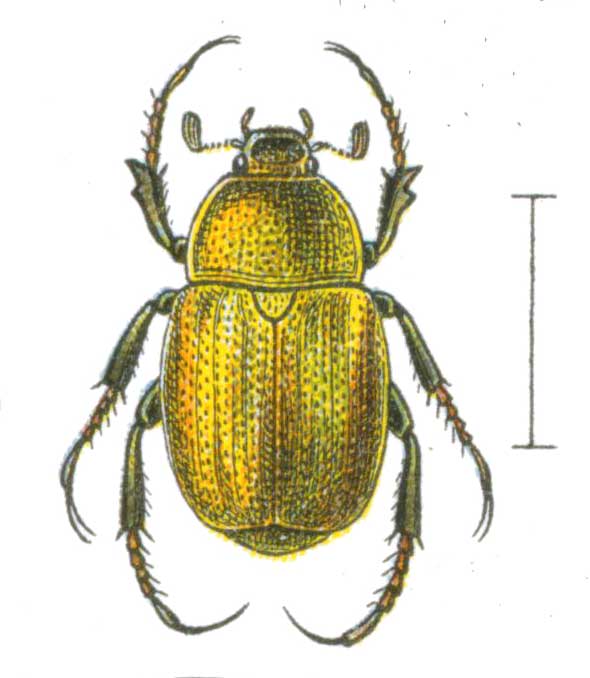
Hoplia argentea
Superregnum: Eukaryota
Regnum: Animalia
Subregnum: Eumetazoa
Cladus: Bilateria
Cladus: Nephrozoa
Cladus: Protostomia
Cladus: Ecdysozoa
Cladus: Panarthropoda
Phylum: Arthropoda
Subphylum: Hexapoda
Classis: Insecta
Cladus: Dicondylia
Subclassis: Pterygota
Cladus: Metapterygota
Infraclassis: Neoptera
Cladus: Eumetabola
Cladus: Endopterygota
Superordo: Coleopterida
Ordo: Coleoptera
Subordo: Polyphaga
Infraordo: Scarabaeiformia
Superfamilia: Scarabaeoidea
Familia: Scarabaeidae
Subfamilia: Melolonthinae
Tribus: Hopliini
Genus: Hoplia
Species: Hoplia argentea
Name
Hoplia argentea (Poda, 1761)
References
Links
Schoolmeesters, P. 2017. Scarabs: World Scarabaeidae Database (version Jul 2016). In: Roskov Y., Abucay L., Orrell T., Nicolson D., Bailly N., Kirk P., Bourgoin T., DeWalt R.E., Decock W., De Wever A., Nieukerken E. van, Zarucchi J., Penev L., eds. 2017. Species 2000 & ITIS Catalogue of Life, 30th January 2017. Digital resource at www.catalogueoflife.org/col. Species 2000: Naturalis, Leiden, the Netherlands. ISSN 2405-8858. Reference page. [accessed on March 8, 2017]
Hoplia argentea is a species of scarabaeid beetle belonging to the subfamily Melolonthinae.
Contents
1 Subspecies
2 Distribution
3 Habitat
4 Description
5 Biology
6 References
7 External links
Subspecies
Subspecies include:[2]
Hoplia argentea var. coerulipennis Della Beffa
Hoplia argentea var. karamani Reitter, 1893
Hoplia argentea var. viridula Mulsant, 1842
Distribution
These flower-loving scarabs, quite common in the mountains, are present in most of Europe (Albania, Austria, Belgium, Croatia, Czech Republic, France, Germany, Greece, Hungary, Italy, Luxembourg, Macedonia, Montenegro, Romania, Serbia, Slovakia, Slovenia, Spain, Switzerland).[2][3]
Habitat
These beetles inhabit open landscapes, parks, mixed forests, gardens, forest edges and meadows.
Description
Old specimen that lost most of the scales
The adults of Hoplia argentea grow up to 9–12 millimetres (0.35–0.47 in) long. It is a very variable chromatic species. The body of these medium-sized flower-loving scarabs is covered with pale green, bluish-green or yellow ocher scales. The scales produce interference colors (as with butterflies). Old specimens lose most of the scales, changing their color from green to brown. Like other species of the genus Hoplia, it has fairly long hind legs terminated by a single nail. The legs in males are black with longer hind legs, while in the female they are reddish and the body colour is usually brown.[4]
Biology
Adults can mostly be encountered from May through September in orchards, meadows and clearings feeding on pollen of flowers, especially Apiaceae species. The larvae develop in the soil feeding on roots of various plants during the summer, then hibernate, emerging as adults in spring.
References
Poda N. (1761) Insecta Musei Graecensis, quae in ordines, genera et species juxta Systema Naturae Caroli Linnaei digessit, Graecii :1-127
Biolib
Fauna europaea
Illustrations of British Entomology; Or a Synopsis of Indigenous Insects
Retrieved from "http://en.wikipedia.org/"
All text is available under the terms of the GNU Free Documentation License

